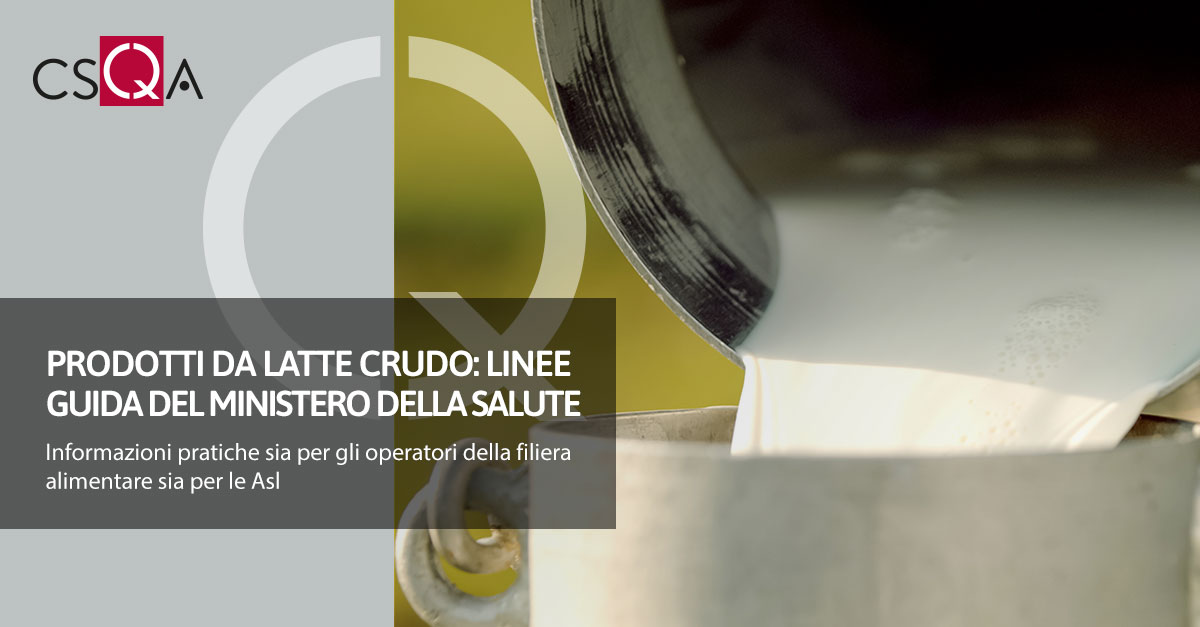 The Ministry of Health has sent the “ Guidelines for the control of Shiga-toxin-producing Escherichia coli (STEC) in unpasteurized milk and milk products” to the Regions, the autonomous Provinces of Trento and Bolzano, and the main trade associations.
The Ministry of Health has sent the “ Guidelines for the control of Shiga-toxin-producing Escherichia coli (STEC) in unpasteurized milk and milk products” to the Regions, the autonomous Provinces of Trento and Bolzano, and the main trade associations."These Guidelines ," said Undersecretary Marcello Gemmato , " are a fundamental technical and scientific tool for strengthening the prevention of STEC infections. We offer the region an updated, shared, and operational document, with the aim of protecting especially the most vulnerable: children, the elderly, and the immunocompromised."
The document is the result of a technical committee established in recent months and composed of experts from the Ministry of Health and MASAF, the Istituto Superiore di Sanità, the Zooprophylactic Institutes, and trade associations to define more stringent mitigation measures, ensure food safety, and reduce the risk of serious Escherichia coli infections associated with the consumption of raw milk and dairy products.
"In summer, " the Undersecretary continued, " the microbiological risk can increase, also due to the increased production of raw milk cheeses in mountainous areas. For this reason, the Government deemed it urgent to intervene in parallel with the parliamentary process of amending national legislation."
Contamination of raw milk cheeses is a significant public health issue.
The guidelines introduce the term “unpasteurized milk” (and, by analogy, “unpasteurized milk cheeses” ) to refer to milk that has not undergone a treatment equivalent to pasteurization capable of eliminating pathogenic microorganisms, including STEC.
In the case of cheeses obtained from pasteurized milk, the STEC risk is eliminated through the pasteurization process.
"The need not to pasteurize milk before cheesemaking stems from historical and cultural reasons and is at the heart of the great gastronomic heritage represented by the over 400 varieties of recognized cheeses that enrich our country," explains the document, which emphasizes the need to ensure food safety and the need to seek "the best balance between economic, cultural, and health dimensions."
To keep contamination under control, therefore, "it is the combined action of multiple control measures, from the fields to the table, that can minimize the STEC risk , thanks to the correct application of good practices in the sector".
Control measures and informative labelling
In addition to the control measures implemented during production, " the introduction of informative labeling is strongly recommended ," the document explains, "in cases where it is not possible to guarantee complete risk mitigation.This information, in addition to being reported on the product, accompanies the product through all stages of distribution up to its sale or administration to the final consumer, so that he can make an informed purchasing or consumption choice."
However, this does not exempt the food business operator from applying all the required control measures but represents "a precautionary tool to protect the consumer".
The document therefore provides practical information for both food supply chain operators and local health authorities.
To control the risk , the guidelines suggest regular monitoring for the presence of STEC on the farm , through examination of the milk (or the milking machine filter); milking hygiene , to avoid the risk of contamination of the milk by fecal material that could contain STEC; maintenance of the cold chain.
At the production and distribution level of cheese and dairy products , the document suggests labelling and consumer information at the distribution level , to "provide consumers with clear information regarding the nature (and risk) of the product they are purchasing or consuming", with information to be included on labels, or in menus or signs, as a complementary action to the information campaign to be carried out by the Ministry of Health, Local Health Authorities and producers.
Suggestions include analytical testing of curds intended for the production of unpasteurized milk cheeses , with the exception of those for which the process has been validated for its ability to eliminate STEC.
The end point of the control by the food operator must be, where possible, the "validation of the production process with demonstration of the ability to inactivate any STEC present in raw milk".
In this case, there is no obligation to inform consumers about the product's risks. If this is not possible, then the curds must be checked and consumers must be informed about the risks associated with consuming products derived from unpasteurized milk. (Source: https://www.helpconsumatori.it/ )